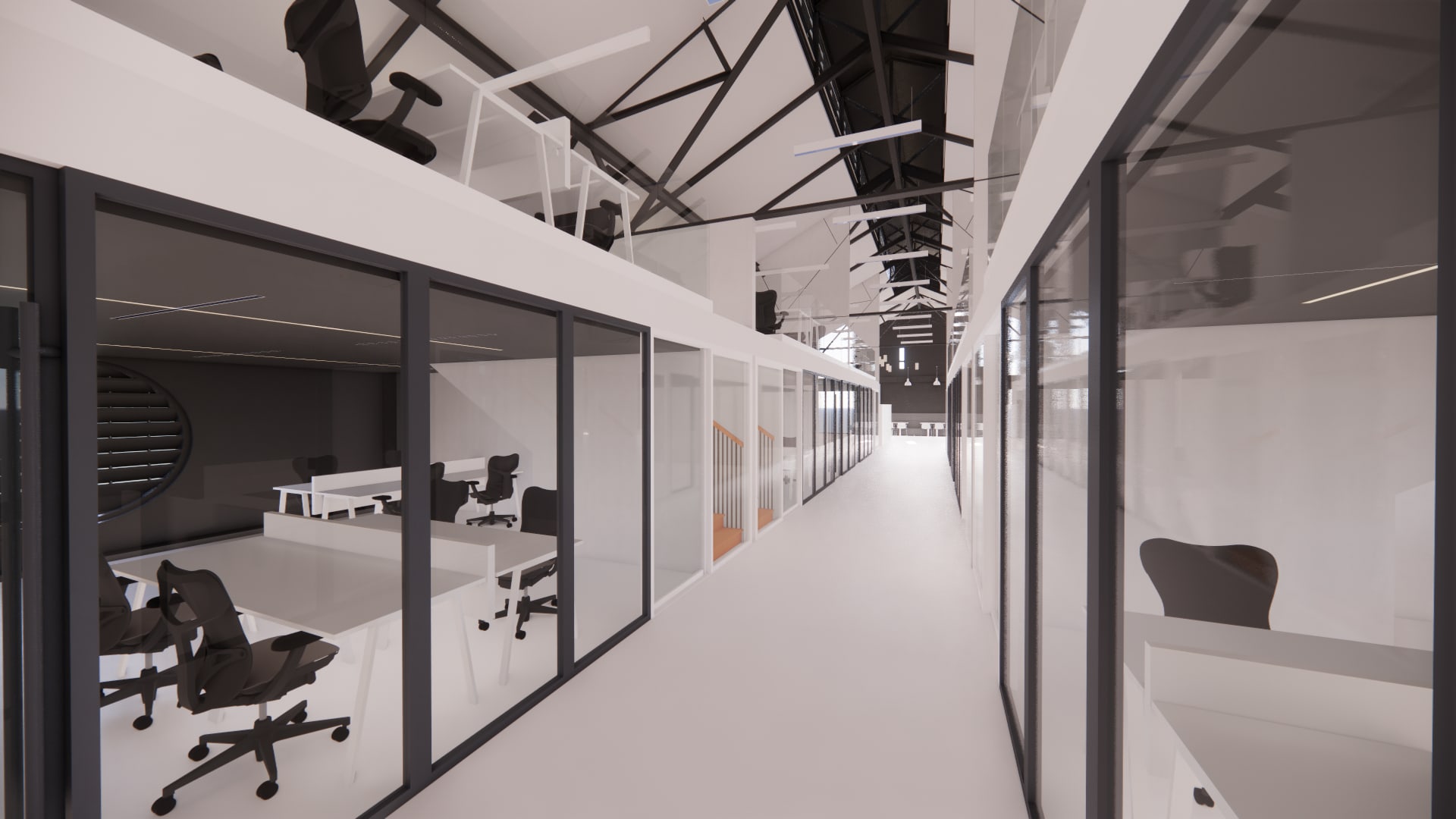A computer-generated image from interiors contractor Portview shows how office space may be segregated as people go back to the workplace after the coronavirus lockdowns are eased.
Portview
What will the post-Covid workplace look like? Steelcase is one of the largest manufacturers of office furniture — desks, chairs, storage products and office pods — and they have a lot of ideas.
They are partnering with MIT to better understand how air circulates in an office environment.
“Well, we know that the six-foot rule is not as simple as that,” CEO Jim Keane told me. “The science shows that particles travel through the air, depending on whether they’re larger particles or smaller particles, based on models that MIT has built. So, we’re using those models to test different kinds of furniture configurations to identify which furniture will best protect the workforce in the future.”
“In the very short run, offices need more separation between desks, and, in some cases, screens or partitions in order to comply with science-based guidelines, for example, the 6-foot rule,” Keane said. “Our own analysis reveals that about 70% of desks in the United States may not be in compliance with that standard. And they’re often sitting on very expensive real estate. So there’s an opportunity to help retrofit and reconfigure these spaces so they don’t sit idle.”
They’ve developed screens that allow colleagues to work together without direct, face-to-face interaction. Other workstations have been reoriented to 90-degree angles. Height-adjustable desks and freestanding screens add extra protection.
Everything is mobile, from desks and screens to whiteboards and power, giving people more control over their work environment.
Even the workplace cafe is being rethought, by staggering tables and chairs and making liberal use of plants that allow employees to get together and work at a safe distance.
You’ll also see a lot more video technology to keep teams connected when they can’t be in the same space.
And, of course, sanitation stations and signage will be everywhere, constantly reminding people to wash their hands and keep their distance.
But how soon will employees return to the office? Kate Lister, president of Global Workplace Analytics, which helps employers create flexible workplace programs, told me that while employers are continuing to push back the date for many employees to return, the data indicates many employees do want to return — but on their own terms.
“You are not going to be completely absent from your colleagues,” she told me. A survey done by her firm in conjunction with Iometrics found that only 6% do not want to work from home at all; 76% want to be in the office an average of 2.5 days a week. “Our forecast is that once the dust settles, 25%-30% of the workforce will continue to work from home at least one day a week, with the sweet spot being about 2.5 days.”
While many enjoy working from home, Lister told me that feeling was not universal: “Some employees simply don’t want to work from home. Our survey found the youngest employees were having the hardest time. This is likely because they don’t have a dedicated space at home, and because they need the subtle coaching that happens when everyone’s in the office.”
What are the implications of this massive move toward flexible time in both the office and the home? “You have to actually size the office for the peak flow,” Keane told me. “You have to think about, how many people are going to be in the office midweek? And that’s going to be what defines the size of real estate for offices in the future.”
Still, getting people back even half of the time may take a bit longer. Steelcase released earnings this week, and while they were above expectations, guidance was disappointing. Dave Sylvester, SVP and CFO, explained, “While we have seen some recent improvement in the rate of decline in our year-over-year order patterns in the Americas, day-to-day business and project pipelines remain depressed due to the ongoing economic uncertainty and the high number of customers deferring their return to the office.”
Subscribe to CNBC PRO for exclusive insights and analysis, and live business day programming from around the world.
